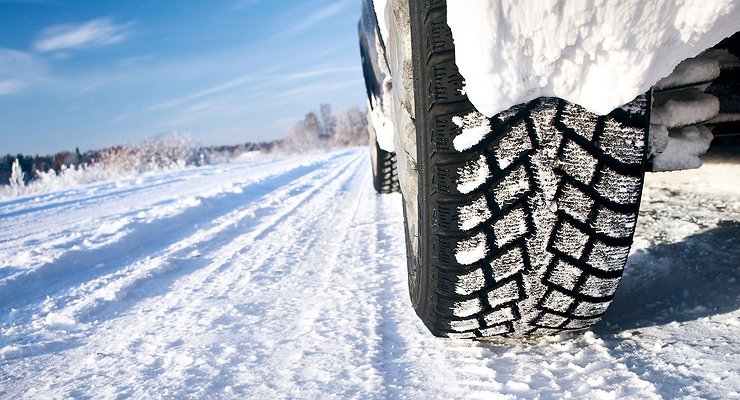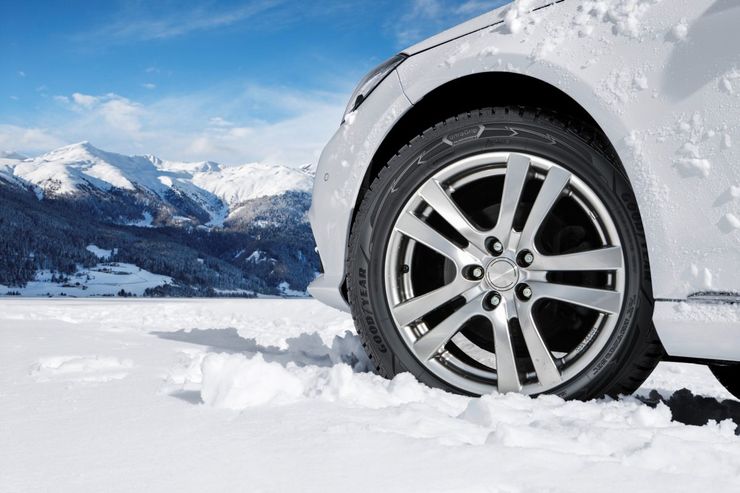Why and how to warm up tires before driving in cold weather
- December 5, 2022
- 0
Often drivers do not pay attention to the tires until they see that they have lost pressure. However, tires are also useful for warming up, especially in cold
Often drivers do not pay attention to the tires until they see that they have lost pressure. However, tires are also useful for warming up, especially in cold

Many people think that warming up tires is just for racing. However, if you have a regular car, this should also be done. Especially when it’s winter outside, because the rubber compound dubs, which affects the braking distance. And there are many subtleties here. But to understand them, we recall that the temperature of a tire depends on its size, the load placed on the wheel and the rolling speed. The degree of wear of the tread also has an effect.
Often in the cold, the pressure in the “cylinders” drops, and such wheels heat up faster when driving. But in this case, the tires are strongly deformed, and heating occurs unevenly, which leads to premature wear.
Continue. They do not warm up the tires on the spot, but after leaving the parking lot. At the same time, the temperature of the “rubber” in the first minutes is significantly lower than necessary for effective adhesion to the coating. As a result, even “studs” can slip. Therefore, it is better to drive evenly at the beginning and avoid sudden accelerations. And you don’t have to skid like in a race, because both the engine and the gearbox suffer.
For 10 minutes of travel in the cold of about -10 degrees, the tires warm up to 7-8 degrees Celsius. Now you can increase the pace. As a result, the “cylinders” “heat up” to 10-15 degrees. These are already working values at which the delay efficiency will be optimal.
Inflating tires in winter is also not recommended, but now many people do it to save fuel. Experts have found that if you increase the pressure from 2 to 2.5 bar, you can save about 1.5% fuel. That is, do not spend 5 l / 100 km, but 4.9 l / 100 km. The difference is minimal, but the damage is much greater.
The car hardens, and when the “rubber” warms up, the pressure jumps to 2.7 bar and the car turns into a crutch. But most importantly, the feel of the steering wheel deteriorates. When demolition or skidding, such an “iron horse” will catch on the road and then slip abruptly. Finally, “pumping” is dangerous for old tires. When heated, they may not withstand. As a result, hernias appear on the side walls, and the wheels have to be thrown away. So the best tactic in the cold is to use the pressure gauge more often and drive slowly for the first few miles of the road.

Many people think that warming up tires is just for racing. However, if you have a regular car, this should also be done. Especially when it’s winter outside, because the rubber compound dubs, which affects the braking distance. And there are many subtleties here. But to understand them, we recall that the temperature of a tire depends on its size, the load placed on the wheel and the rolling speed. The degree of wear of the tread also has an effect.
Often in the cold, the pressure in the “cylinders” drops, and such wheels heat up faster when driving. But in this case, the tires are strongly deformed, and heating occurs unevenly, which leads to premature wear.
Continue. They do not warm up the tires on the spot, but after leaving the parking lot. At the same time, the temperature of the “rubber” in the first minutes is significantly lower than necessary for effective adhesion to the coating. As a result, even “studs” can slip. Therefore, it is better to drive evenly at the beginning and avoid sudden accelerations. And you don’t have to skid like in a race, because both the engine and the gearbox suffer.
For 10 minutes of travel in the cold of about -10 degrees, the tires warm up to 7-8 degrees Celsius. Now you can increase the pace. As a result, the “cylinders” “heat up” to 10-15 degrees. These are already working values at which the delay efficiency will be optimal.
Inflating tires in winter is also not recommended, but now many people do it to save fuel. Experts have found that if you increase the pressure from 2 to 2.5 bar, you can save about 1.5% fuel. That is, do not spend 5 l / 100 km, but 4.9 l / 100 km. The difference is minimal, but the damage is much greater.
The car hardens, and when the “rubber” warms up, the pressure jumps to 2.7 bar and the car turns into a crutch. But most importantly, the feel of the steering wheel deteriorates. When demolition or skidding, such an “iron horse” will catch on the road and then slip abruptly. Finally, “pumping” is dangerous for old tires. When heated, they may not withstand. As a result, hernias appear on the side walls, and the wheels have to be thrown away. So the best tactic in the cold is to use the pressure gauge more often and drive slowly for the first few miles of the road.
Source: Avto Vzglyad
Donald Salinas is an experienced automobile journalist and writer for Div Bracket. He brings his readers the latest news and developments from the world of automobiles, offering a unique and knowledgeable perspective on the latest trends and innovations in the automotive industry.